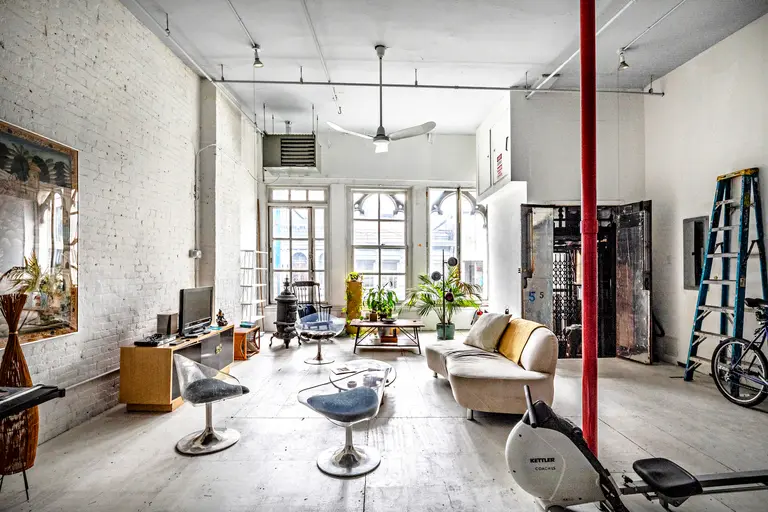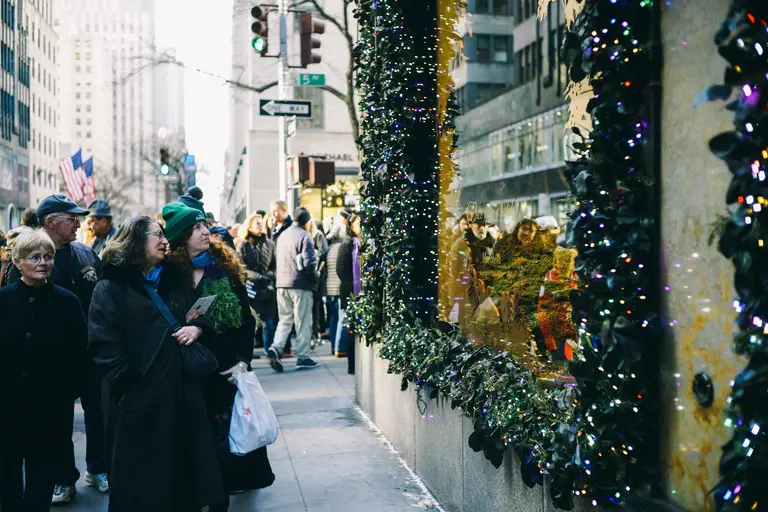Restoration of Richard Haas’ trompe-l’oeil mural in Soho begins

112 Prince Street mural in 1974 (left) and during the current restoration project (right). Photos: CITYarts
After years of deterioration, Richard Haas‘ iconic mural on the outside of a building in Soho will be restored. Painted in 1975, the five-story-high mural depicts a faux cast-iron facade painted to look like a continuation of the late 19th-century building at 112 Prince Street. Natural elements, time, and graffiti have made the mural unrecognizable, with the artwork almost completely faded. Work to bring the mural back to life began this week, with the project expected to be completed in November.

The original mural was commissioned in 1974 by Doris Freedman, the director of the public art organization City Walls, and completed the following year. Haas accurately repeated the design of the cast iron facade of 112 Prince Street, designed in 1889 by Peter Berger, to the unadorned brick wall. The artist incorporated two pre-existing windows and added a sleeping cat painted into another window as part of the mural.
In 1976, New York Times architectural critic Ada Louise Huxtable called the finished result a “trompe l’oeil triumph.” Not only is the mural significant as a marker of Soho’s legacy as a neighborhood for artists but also as Haas’s first outdoor mural, leading to his career as a famed large-scale outdoor muralist.


The mural has only been restored once before, five years after its completion. Now for the first time in 40 years, the work will be restored by muralist Robin Alcantara and a team of painters recommended by Tsipi Ben-Haim, the founder of public art nonprofit CITYarts, which has worked to restore the mural since 2015. Haas has provided “leadership and creative direction,” according to a press release.
A campaign to refurbish Haas’ work began eight years ago after an article in the Times said the mural was “dying a slow and painfully public death” and looked like a “battleground where graffiti vandals and natural entropy vie to see which can inflict the most insult.” After the co-op building said it could not afford the restoration, Haas helped organize a fundraising effort to save his work, jumpstarted by a donation from developer David Walentas.
The artist and his wife, Katherine Sokolnikoff, selected CITYarts, Inc. to oversee the project and secure enough funding from other groups, including the Bloomberg Philanthropies, the Silverweed Foundation, and Agnes Fund, among other private donors.
The pandemic temporarily halted the project, but new owners of the co-op building worked with Haas to move it forward, which included approval from the Landmarks Preservation Commission.
As reported by the Times, each floor will take four gallons of water-based paint, the same Haas used in the 1970s, for a total of 55 faux windows. The restored mural will look almost the same as the original, with two new additions: a dog and a cat who both currently live in the building.
Repainting began last week and is expected to be completed in November, weather permitting.





























